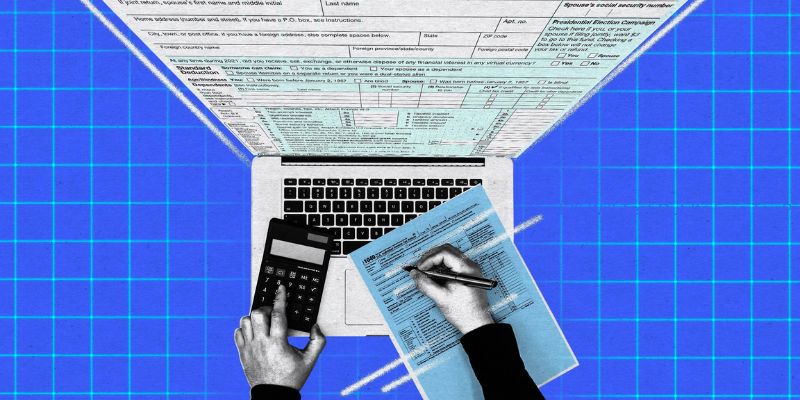When it comes to managing finances and understanding the health of a company's assets, terms like "accumulated depreciation" often pop up. But what exactly is accumulated depreciation, and why is it crucial for businesses to grasp its nuances? In this article, we'll explore the concept of accumulated depreciation, various calculation methods, and best practices for effective management.
What is Accumulated Depreciation?
Depreciation is like spreading the cost of something, like a computer or a building, over many years. When we buy something, we don't want to say we spent all the money at once because the thing lasts for a long time. So, every year, we write down a little bit of the cost to show that we used it.
This yearly bit is called depreciation expense. And all these yearly amounts add up to become the total decrease in value, which we call accumulated depreciation. It helps companies show how much their things are worth over time, making it easier to understand their money situation.
Why is Accumulated Depreciation Important?
Accumulated Depreciation plays a pivotal role in financial reporting. It helps businesses accurately reflect the true value of their assets on the balance sheet. By accounting for depreciation over an asset's useful life, companies can distribute the cost of the asset evenly over several accounting periods.
This accounting practice aligns with the matching principle, ensuring that the costs associated with generating revenue are recognized in the same period as the revenue itself. In simpler terms, accumulated depreciation helps businesses present a more realistic financial picture.

Methods for the Calculation of Accumulated Depreciation
Accumulated depreciation is not a one-size-fits-all concept, and various methods exist to calculate it. Each method has its merits and is suitable for different scenarios. Let's delve into some of the most common ones:
Straight-Line Method
The Straight-Line Method is a straightforward and widely employed approach to calculating depreciation. Under this method, an equal amount of depreciation expense is allocated each year over the asset's useful life. This simplicity makes it particularly suitable for small businesses or those dealing with assets that exhibit a consistent and predictable rate of depreciation.
Imagine a scenario where a company purchases a piece of equipment for $10,000 with a useful life of 5 years and no salvage value. With the Straight-Line Method, the annual depreciation expense would be $2,000 ($10,000 / 5 years), evenly distributed over the asset's entire useful life. This method provides a clear and steady depreciation pattern, facilitating easy budgeting and financial planning for businesses.
Declining Balance Method
In contrast to the Straight-Line Method, the Declining Balance Method front-loads depreciation by allocating a higher expense in the earlier years of an asset's life. This reflects the acknowledgment that many assets experience a more rapid decline in value during their initial years. This method is often favored for assets such as technology or machinery that may become outdated quickly.
For instance, if a company uses a declining balance rate of 20% and has an asset worth $10,000, the first-year depreciation would be $2,000 (20% of $10,000). In the subsequent years, the depreciation is calculated based on the reduced book value. This approach is advantageous for businesses that want to account for the higher costs of maintenance and repair in the early stages of an asset's life.
Double-Declining Balance Method
The Double-Declining Balance Method is an accelerated depreciation technique that acknowledges the higher wear and tear of an asset in its earlier years. Similar to the declining balance method, it starts with the book value of the asset and applies a fixed percentage, usually double the straight-line method rate. The process repeats each year, resulting in a declining depreciation expense over time.
This method is particularly advantageous for businesses that expect an asset to generate more value in its early years, reflecting the rapid technological advancements that often lead to the obsolescence of certain assets. However, it's worth noting that while this method front-loads depreciation, it may not be suitable for all assets, especially those with a more consistent pattern of use and depreciation.

Sum-of-the-Years Digits Method
The Sum-of-the-Years Digits Method is another form of accelerated depreciation, considering the sum of the digits of an asset's useful life to calculate depreciation. The formula involves a bit more complexity, but the rationale behind it is straightforward.
The method recognizes that the wear and tear on an asset are generally higher in its earlier years, gradually decreasing as it approaches the end of its useful life. To calculate depreciation using this method, one adds up the digits representing each year of the asset's useful life.
In subsequent years, the remaining useful life is multiplied by the sum of the digits, providing a more accelerated depreciation in the earlier years compared to the straight-line method. This method is suitable for assets that experience higher wear and tear at the outset.
Units of Production Method
The Units of Production Method takes a unique approach to depreciation by tying it directly to the usage of an asset. This method is particularly beneficial for businesses where an asset's value is closely linked to its level of production or usage, such as machinery or equipment.
Instead of relying on a fixed time period for depreciation, the Units of Production Method calculates depreciation based on the actual units produced or the hours an asset is used. This makes it a more dynamic approach, aligning the depreciation expense with the asset's actual contribution to the production process.
It's crucial to accurately estimate the total productive units or hours over the asset's useful life to effectively employ this method.
Conclusion
Accumulated depreciation may seem like a complex financial concept at first glance, but breaking it down into manageable components reveals its importance and practical implications for businesses.
By understanding various calculation methods and adopting best practices for management, companies can navigate the intricacies of accumulated depreciation, ensuring financial statements accurately reflect the true value of their assets.




